Abstract
Pseudomonas strains capable of mineralizing 2,4-dichlorophenol (DCP) and p-nitrophenol (PNP) in culture media were isolated from soil. One DCP-metabolizing strain mineralized 1.0 and 10 micrograms of DCP but not 2.0 to 300 ng/ml in culture. When added to lake water containing 10 micrograms of DCP per ml, the bacterium did not mineralize the compound, and only after 6 days did it cause the degradation of 1.0 microgram of DCP per ml. The organism did not grow or metabolize DCP when inoculated into sterile lake water, but it multiplied in sterile lake water amended with glucose or with DCP and supplemental nutrients. Its population density declined and DCP was not mineralized when the pseudomonad was added to nonsterile sewage, but the bacterium grew in sterile DCP-amended sewage, although not causing appreciable mineralization of the test compound. Addition of the bacterium to nonsterile soil did not result in the mineralization of 10 micrograms of DCP per g, although mineralization was evident if the inoculum was added to sterile soil. A second DCP-utilizing pseudomonad failed to mineralize DCP when added to the surface of sterile soil, although activity was evident if the inoculum was mixed with the soil. A pseudomonad able to mineralize 5.0 micrograms of PNP per ml in culture did not mineralize the compound in sterile or nonsterile lake water. The bacterium destroyed PNP in sterile sewage and enhanced PNP mineralization in nonsterile sewage. When added to the surface of sterile soil, the bacterium mineralized little of the PNP present at 5.0 micrograms/g, but it was active if mixed well with the sterile soil.(ABSTRACT TRUNCATED AT 250 WORDS)
Full text
PDF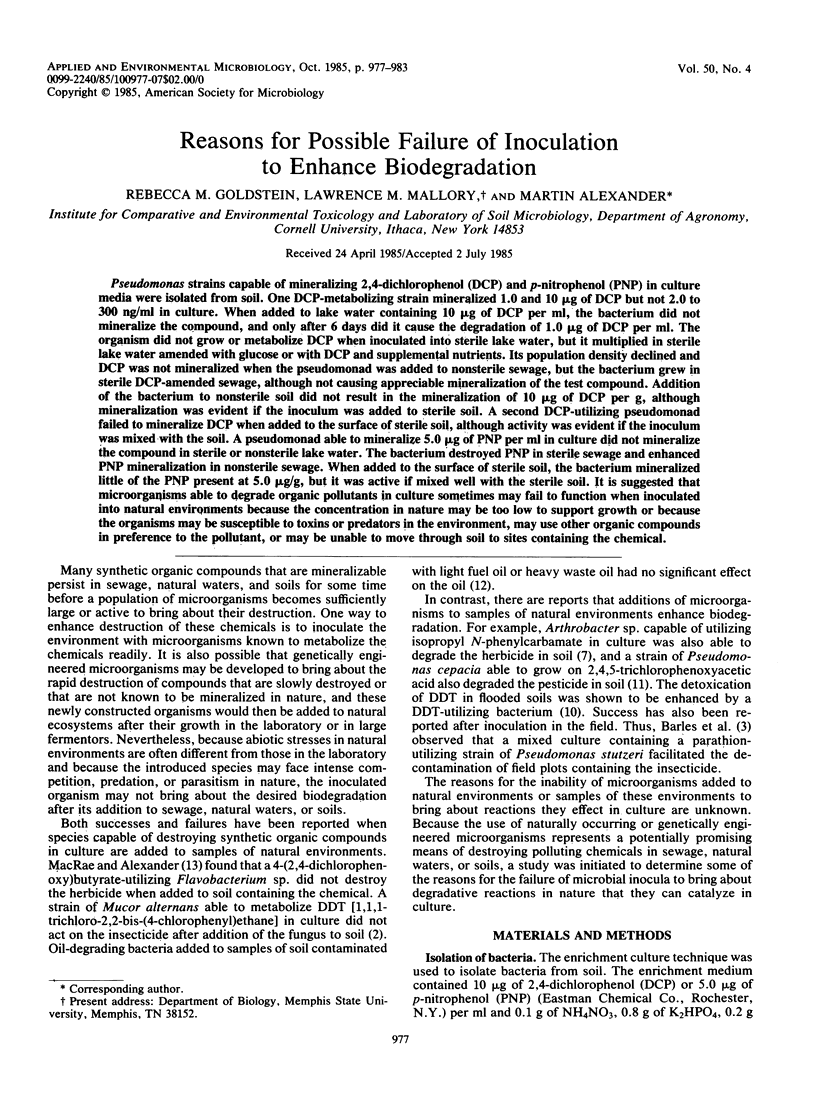
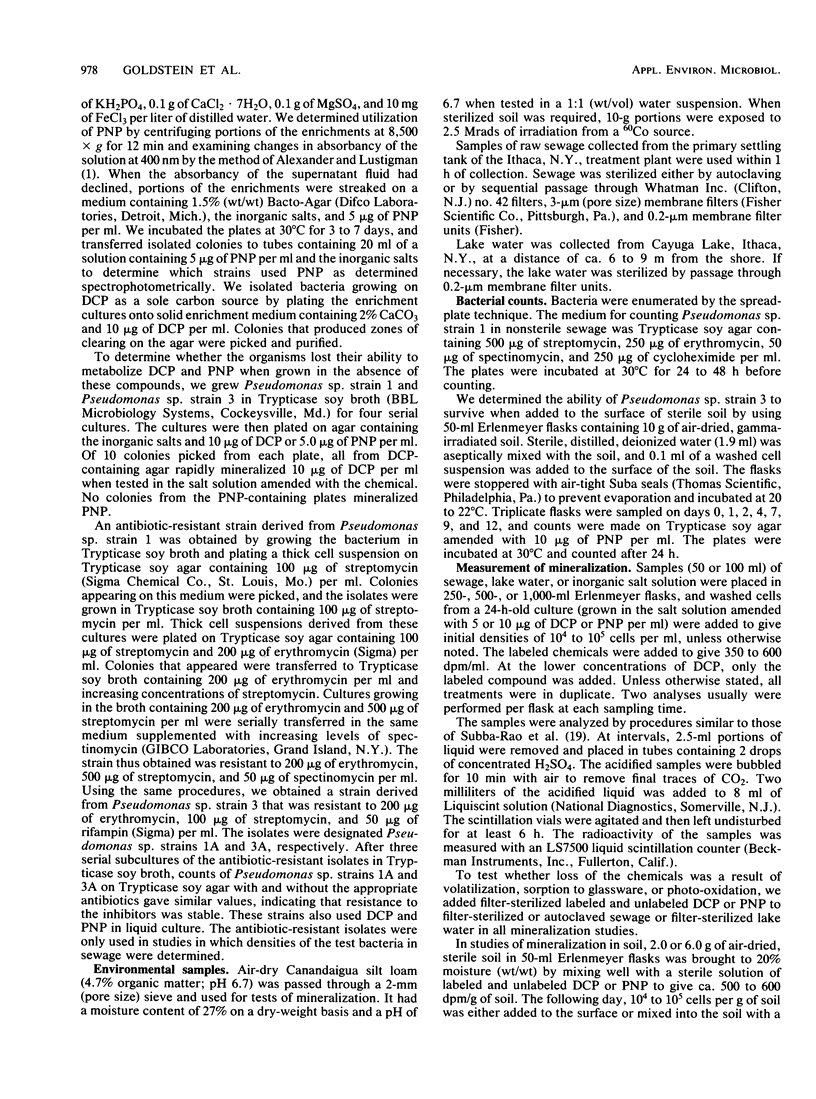
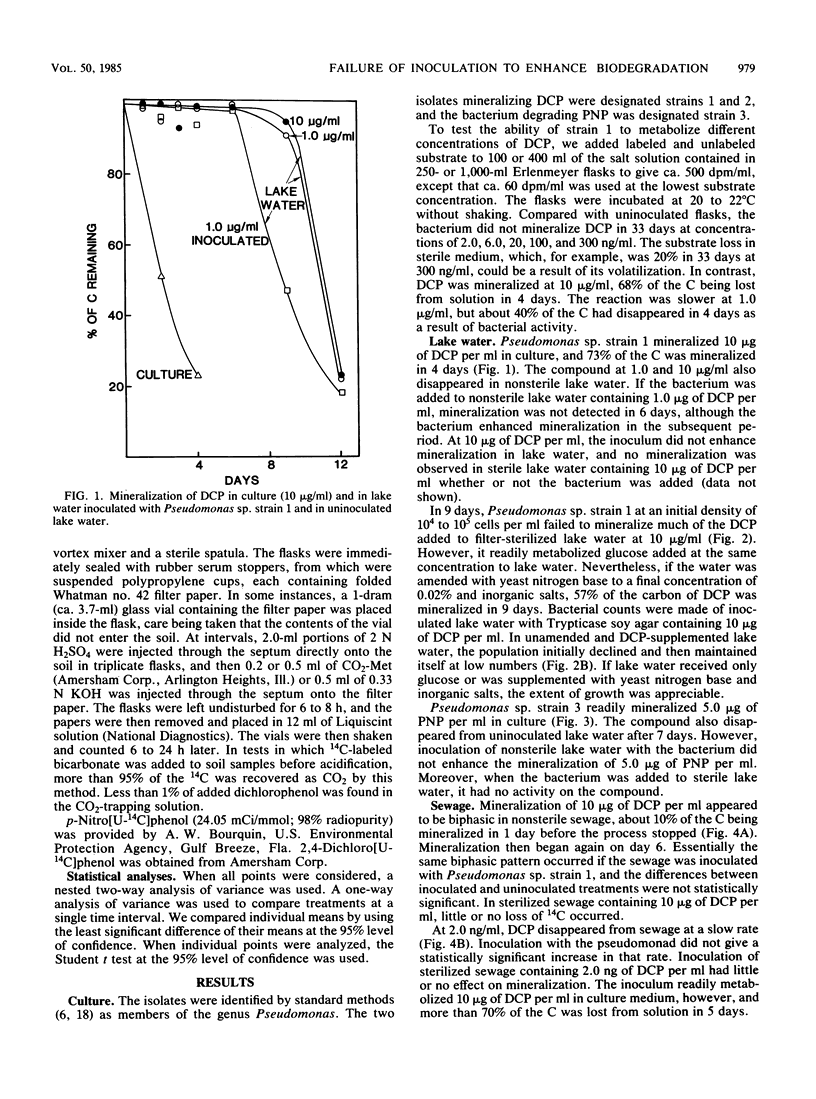
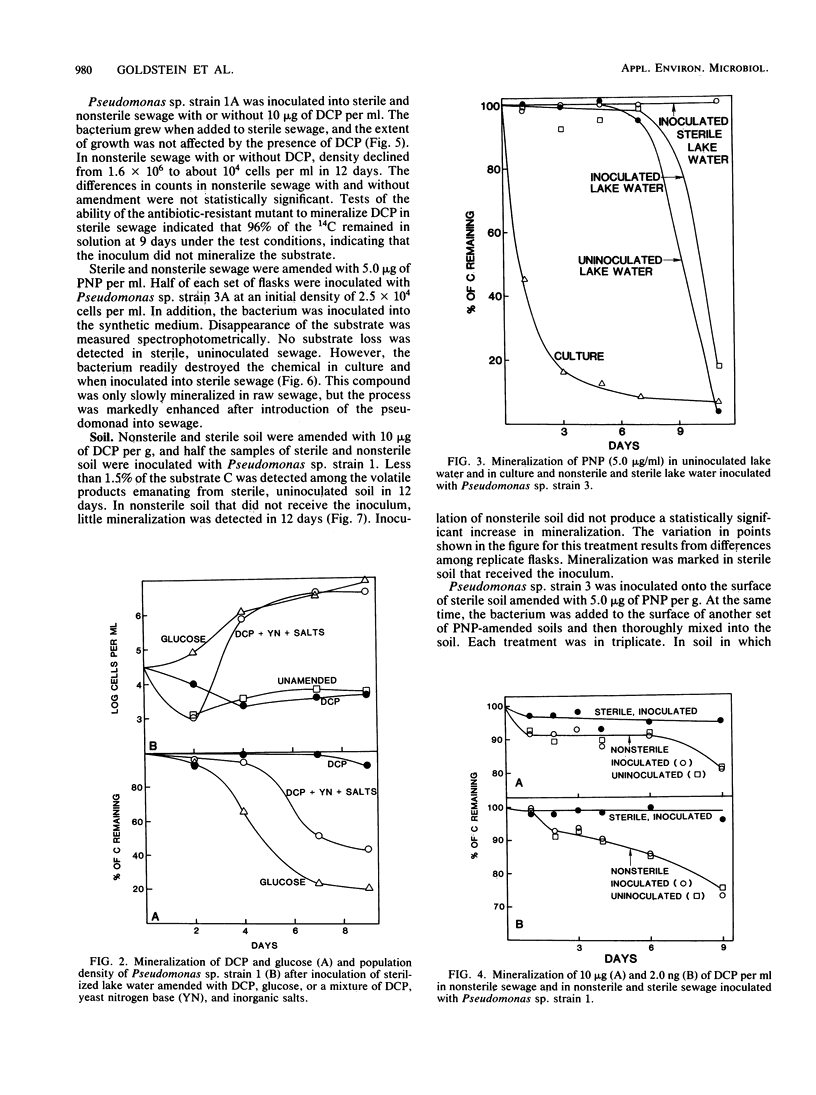
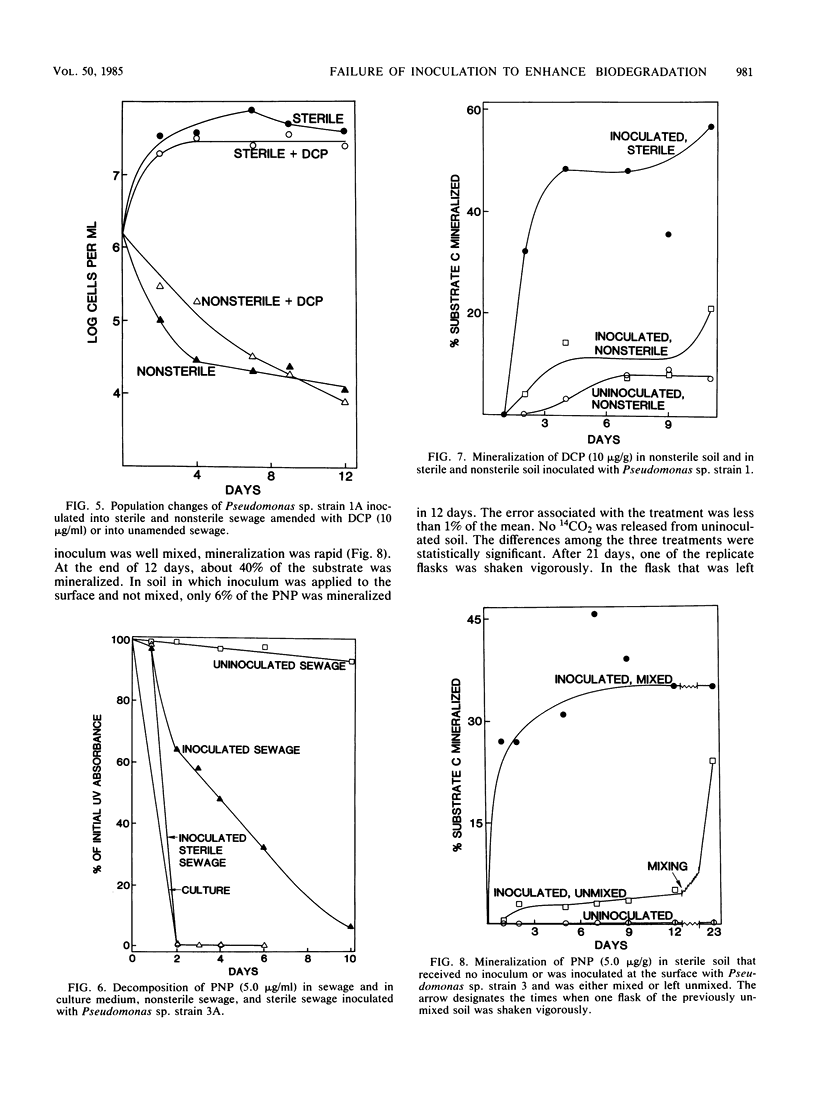
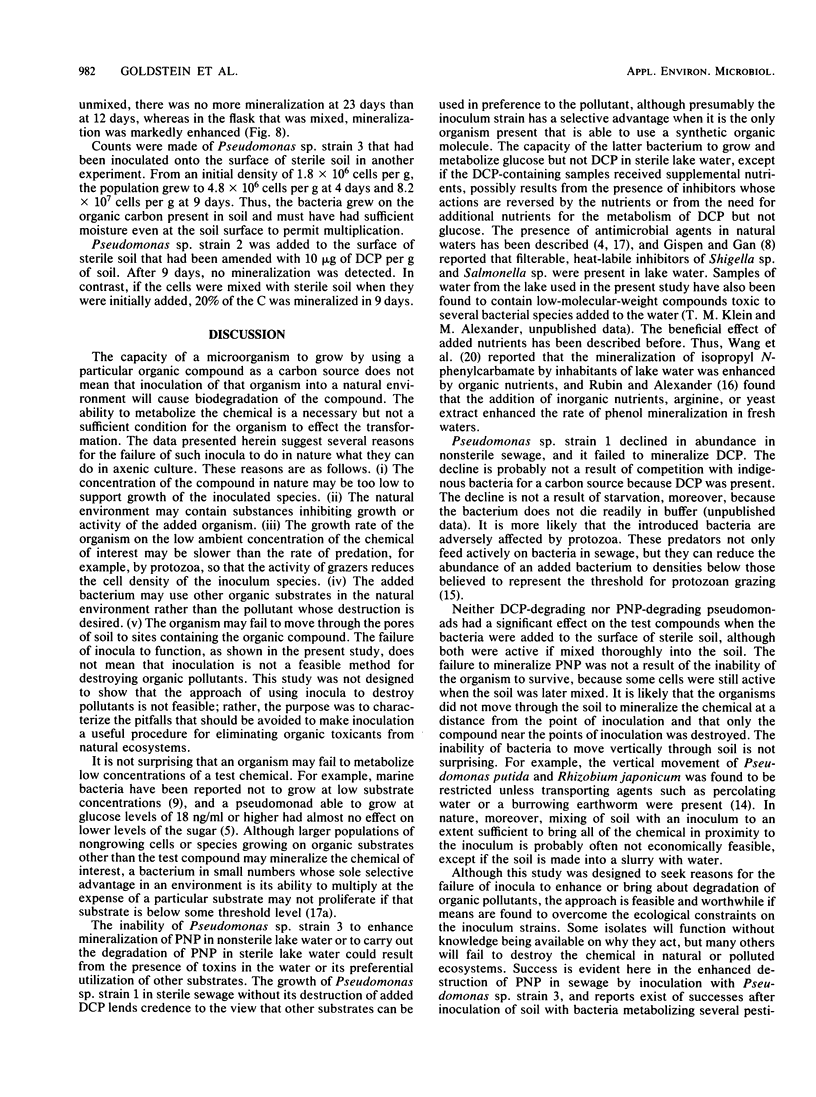

Selected References
These references are in PubMed. This may not be the complete list of references from this article.
- Anderson J. P., Lichtenstein E. P., Whittingham W. F. Effect of Mucor alternans on the persistence of DDT and Dieldrin in culture and in soil. J Econ Entomol. 1970 Oct;63(5):1595–1599. doi: 10.1093/jee/63.5.1595. [DOI] [PubMed] [Google Scholar]
- Barles R. W., Daughton C. G., Hsieh D. P. Accelerated parathion degradation in soil inoculated with acclimated bacteria under field conditions. Arch Environ Contam Toxicol. 1979;8(6):647–660. doi: 10.1007/BF01054867. [DOI] [PubMed] [Google Scholar]
- GISPEN R., GAN K. H. The antibacterial effect of river water on Shigella shigae in connection with the presence of corresponding antagonists and bacteriophages. Antonie Van Leeuwenhoek. 1950;16(5):373–385. doi: 10.1007/BF02274434. [DOI] [PubMed] [Google Scholar]
- Kearney P. C., Woolson E. A., Plimmer J. R., Isensee A. R. Decontamination of pesticides in soils. Residue Rev. 1969;29:137–149. doi: 10.1007/978-1-4615-8455-1_10. [DOI] [PubMed] [Google Scholar]
- Kilbane J. J., Chatterjee D. K., Chakrabarty A. M. Detoxification of 2,4,5-trichlorophenoxyacetic acid from contaminated soil by Pseudomonas cepacia. Appl Environ Microbiol. 1983 May;45(5):1697–1700. doi: 10.1128/aem.45.5.1697-1700.1983. [DOI] [PMC free article] [PubMed] [Google Scholar]
- Mallory L. M., Yuk C. S., Liang L. N., Alexander M. Alternative prey: a mechanism for elimination of bacterial species by protozoa. Appl Environ Microbiol. 1983 Nov;46(5):1073–1079. doi: 10.1128/aem.46.5.1073-1079.1983. [DOI] [PMC free article] [PubMed] [Google Scholar]
- Subba-Rao R. V., Rubin H. E., Alexander M. Kinetics and extent of mineralization of organic chemicals at trace levels in freshwater and sewage. Appl Environ Microbiol. 1982 May;43(5):1139–1150. doi: 10.1128/aem.43.5.1139-1150.1982. [DOI] [PMC free article] [PubMed] [Google Scholar]
- Wang Y. S., Subba-Rao R. V., Alexander M. Effect of substrate concentration and organic and inorganic compounds on the occurrence and rate of mineralization and cometabolism. Appl Environ Microbiol. 1984 Jun;47(6):1195–1200. doi: 10.1128/aem.47.6.1195-1200.1984. [DOI] [PMC free article] [PubMed] [Google Scholar]


